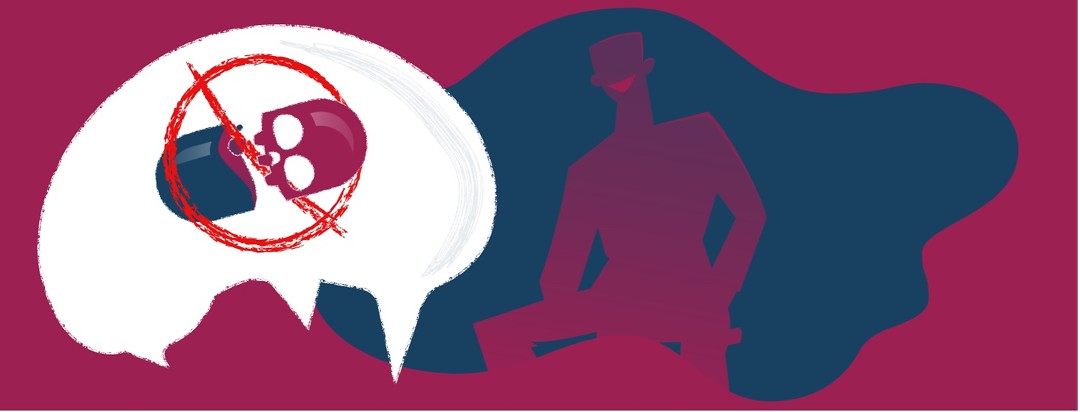Focusing on the Wrong Villain
In a recent op-ed in The Hill, a Washington, DC newspaper, Dr. Lynn Webster, MD, past president of the American Academy of Pain Medicine and the author of The Painful Truth stated, “[A]ttempting to curb the number of drug deaths by hyper-focusing on prescription opioids is like calling the fire department to extinguish one house fire while the surrounding three houses next door burn to the ground.”
His op-ed focuses on what many legitimate, responsible chronic pain patients have argued since the “opioid crisis” began in earnest after the CDC published its Guideline for Prescribing Opioids for Chronic Pain in March 2016: that what we have in the United States is not a prescription painkiller crisis, but an drug crisis in which the opioid street drugs heroin and, more recently, fentanyl, are the real culprits.
But our hyperactive media, always on the lookout for a dramatic story, has fed the hysteria over the “crisis” by misinterpreting and misreporting the facts.
A Matter of Interpretation?
Webster argues that the numbers cited by the government to back up the opioid crisis are misinterpreted, skewed, or both. Josh Bloom, PhD, the senior director of chemical and pharmaceutical sciences with the American Council on Science and Health, agrees.
Bloom states in a recent article about the problem, published in the ACSH’s online journal, that while there are about 60,000 drug overdose deaths annually in the U.S., this number is often erroneously interpreted as deaths caused by prescription opioids alone. Instead, “drugs” includes all drugs, such as aspirin, anticoagulants, and antidepressants. Also included in the mix: illicit drugs like heroin, fentanyl, and cocaine.
“All opioids together (including heroin) killed 30,000 people,” he states. “The number of deaths from prescription opioids—the target of the current crusade— was about 17,000— half the number killed by accidental falls. Are we having an ‘accidental fall epidemic?’ Why not? Accidental falls are killing twice as many people as prescription pain medicines.”
Bloom goes on to explain that the number of annual deaths blamed on prescribed opioids—17,000—is also inaccurate, because most of them also involved other drugs, such as benzodiazepines “… which potentiate the effect of the opioid action,” he states. “In 2015 almost half (7,500) of the overdose deaths from opioids also involved benzodiazepines. When you include other drugs that are taken with opioids, especially alcohol and cocaine, it can reasonably be assumed that the number of deaths from opioid pills alone will be much lower, perhaps in the neighborhood of 5,000 …”
That’s a far cry from the 60,000 to 64,000 deaths (the number varies depending on the source) attributed by the government and the media to prescribed opioids noted in both articles. Bloom notes 5,000, is how many bicycle and bicycle-related deaths there are each year.
What About Chronic Pain Patients?
My point in bringing all this up is that chronic pain patients are suffering because of the ongoing government crackdown on prescription opioids, which seems based on an erroneous interpretation of the numbers. Only this morning, my elderly mom received a notice in the mail from her health insurance company informing her that they will only cover 30 days-worth of any opioid medication at any time. We laughed about it. Mom has had to ask her doctor to renew her tramadol prescription every month for years, now. She takes these mild synthetic opioids to help relieve her chronic pain from osteoarthritis in her lower spine, spinal bone spurs, and sciatica.
The “opioid crisis” surely began with those nefarious “pill mills.” It continued with widespread, careless overprescribing by, most likely, well-intentioned doctors. Both made easy the diversion of many of those pills to the streets, where they became drugs of abuse. It’s true, too, that prescription opioids can cause physical dependence in, and in roughly 4 out of 100 patients, addiction. There is no argument that these are potent and potentially deadly drugs. At the same time, there is little argument that they relieve the pain of patients all over the world, both in the short and long terms, without causing harm.
And because of the growing public awareness of the problem, the actual number of prescribed opioids has fallen steadily for several years. Unfortunately, though, overdose deaths from the illicit opioid drugs heroin and fentanyl have risen sharply over the same period. Here is the real “opioid crisis.” We must do more to curtail the supply of these deadly illicit drugs.
The Chronic Pain Crisis
Forcibly cutting back dosages and/or denying opioid pain killers to legitimate, responsible chronic pain patients won’t resolve the “opioid crisis.” Instead, it only creates a new one: the chronic pain crisis.
Denying effective pain medication to diagnosed, responsible chronic pain patients condemns them to frequent or continuous intractable pain, disability, and lessened quality of life. It can even shorten their lives. Pain causes other systemic issues that can affect the heart and other vital organs. And some chronic pain patients, faced with a future of unending agony and indifference from the health care industry, may choose to end their own lives. What a terrible, unnecessary tragedy.
I’ve run across several articles in the news about the chronic pain crisis recently. Please take a few minutes to read those I’ve mentioned here. They’re eye-opening and offer a ray of hope in what can seem an ever-darkening world. Slowly, the media is starting to notice the chronic pain crisis, which is devastatingly real. One hundred million Americans live with chronic pain. I hope our government will notice the issue, too.
Community Poll
What flare symptom do you wish you could avoid the most?

Join the conversation